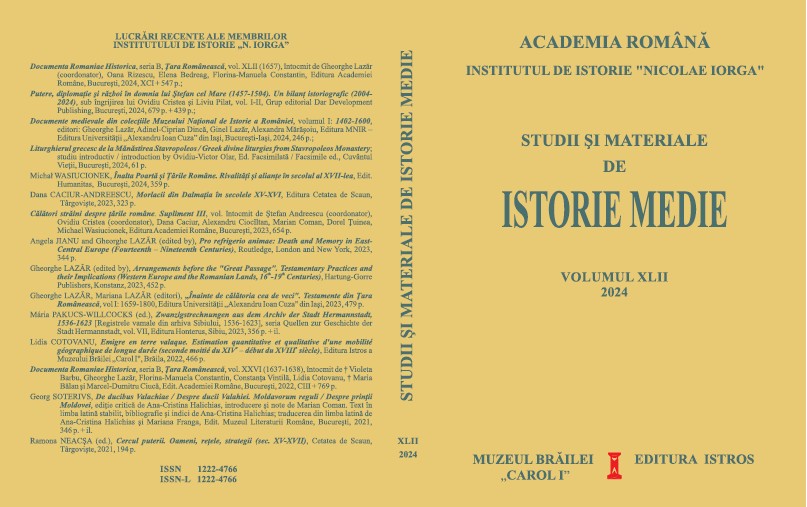Un ierarh muntean din secolul al XVIII-lea, Filaret al II-lea. Despre familia şi dispoziţiile sale testamentare
A Wallachian Hierarch in the 18th Century: Filaret II. On his Family and Testamentary Dispositions
Author(s): Gheorghe LazărSubject(s): History, Cultural history, Economic history, Social history, Modern Age, 18th Century
Published by: Institutul de Istorie Nicolae Iorga
Keywords: Wallachia; Metropolitan Filaret II; 18th century; will; family; merchants; high clerics;
Summary/Abstract: In a study published more than a century ago, N. Iorga claimed that, in early modern Moldavia, one could speak of a real “aristocracy in cassocks” given the presence in the church hierarchy of numerous high clerics from great boyar families. Surprisingly this did not seem to be the case in Wallachia. The research of the late Violeta Barbu on the monastic vocation of the Wallachian elite in the 17th century confirmed Iorga’s intuition. However, the situation changed in the 18th century. In the Wallachian church, in addition to hierarchs from rather modest social backgrounds, high clerics from aristocratic families, both high and low, from boyar families and from other socio economic categories undergoing a process of social advancement, such as the merchant class, started to appear.A rare example of a Wallachian hierarch of merchant origin is Bishop Filaret of Râmnic (1780 1792), honorary titular of Myra (“al Mirelor”) and for a short period of time Metropolitan of Wallachia (1792 1793, the second to bear this name). This article reconstructs the beginnings of the family from which this Metropolitan descended, the presence of its earliest members north of the Danube, and Filaret’s main testamentary dispositions. The main corpus of sources consists of a series of contemporary documents largely unknown in the literature, as well as the testament of this Metropolitan, edited now for the first time. It should also be emphasised that Filaret, along with Bishop Chesarie Halepliul, was one of the few Wallachian hierarchs to come from a family with clear merchant origins. Moreover, it can be said without reservation that the “similarities” in the cursus honorum of the two hierarchs are not limited to their shared social background or to their rise to the episcopal see of Râmnic. These “coincidences” were not the only ones, as the present study argues. Their “parallel lives” can also provide valuable insights for future research into the strategies of ascension, the various forms of solidarity and familiarity, as well as into the intellectual and moral qualities of 18th century Wallachian high clerics.
Journal: Studii şi Materiale de Istorie Medie (SMIM)
- Issue Year: XLII/2024
- Issue No: XLII
- Page Range: 287-323
- Page Count: 37
- Language: Romanian
- Content File-PDF

